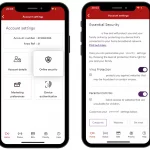Possible Boost for Broadband as ITU Seeks to Double Video Compression
Having a slow broadband connection is no fun if you enjoy Internet video streaming, but fear not because the International Telecommunication Union (ITU) has begun work on a future video coding standard that could “double the video compression capability” (i.e. better quality video for less speed).
At present online video content accounts for around 60-70% of all consumer Internet traffic and demand is constantly rising, not least due to the advent of 4K streaming (video resolution of 3840 x 2160). However video compression and optimisation technology has done a fantastic job of keeping pace with change and as a result it’s possible to fit increasingly high quality video down a fairly slow broadband line.
Last year we ran a couple of articles that looked at the impact of advanced video compression methods on video streaming quality and broadband speeds (here and here), which highlight just how dramatic the difference can be between old and new standards. For example, today many 4K streams require you to have a broadband speed of around 20-30Mbps (Megabits per second) but not long ago this was more like 50Mbps and prior that it would have been 100-200Mbps etc.
Advertisement
One of the best known standards in this important field is called H.265 High Efficiency Video Coding (HVEC), which over the past few years has worked its way into a lot of modern Smart TVs, computers, set-top-boxes and so forth. However the pace of technological change means that ITU-T Study Group 16 (SG16) and the Moving Pictures Expert Group (MPEG) have once again teamed up to build a sequel to H.265 (H.266?).
At present the work is only just getting started via an initial ‘Call for Evidence‘. Nevertheless the aim is the “development of a standard with double the video compression capability of HEVC” and a target completion date for “late” 2020. All of this spells good news for those on slower broadband speeds, particularly with the UK being about to adopt a new 10Mbps Universal Service Obligation (USO).. also by 2020.
ITU-T Statement
The SG16-MPEG Joint Video Exploration Team (JVET) is studying the feasibility of the project and evaluating candidate technology designs.
JVET is reporting roughly 30 per cent improvement in compression capability relative to HEVC with its preliminary ‘Joint Exploration Model’, with the qualification that this improvement comes with high computational complexity. This work is considering a wide variety of video source content, including new types of content such as high dynamic range video and virtual-reality/360° omnidirectional video.
The preliminary ‘Call for Evidence’ will be followed by a final ‘Call for Evidence’ on 7 April 2017. Responses to these calls will be evaluated by a meeting of JVET in Turin, Italy, 14-21 July 2017.
As ever the adoption of any new video standard will also be slow, which is due to a variety of reasons such as complicated licensing arrangements and the fact that more advanced video standards tend to also require more powerful computer processors (CPUs). All of this can translate to higher costs and no company wants to lose customers by adopting a new standard too quickly (i.e. forcing those without the capability off their platform).
Never the less the importance of online video means that it’s worth keeping an eye on changes like this, which can have a significant if seamless impact on our collective Internet video consumption. Making IPTV services more widely accessible would be another obvious bonus.
Advertisement
Mark is a professional technology writer, IT consultant and computer engineer from Dorset (England), he also founded ISPreview in 1999 and enjoys analysing the latest telecoms and broadband developments. Find me on X (Twitter), Mastodon, Facebook, BlueSky, Threads.net and Linkedin.
« The Changing Face of UK Home Phone Lines and Broadband Provision


















































Comments are closed